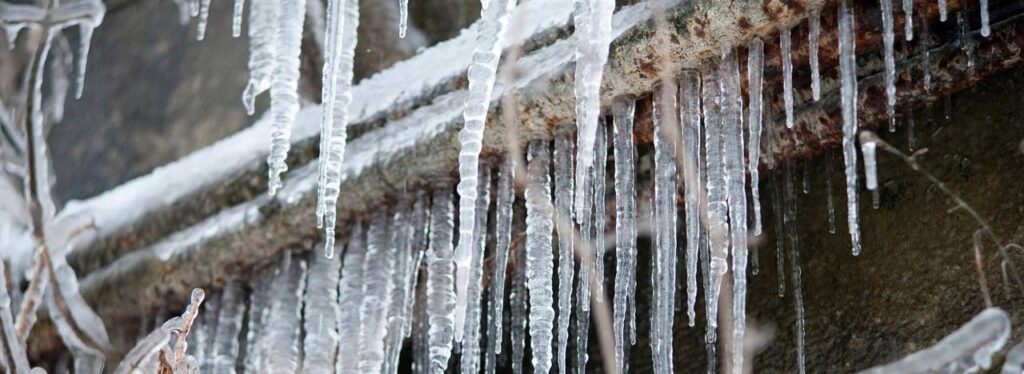Guidance for Avoiding Frozen Pipes in Cold Weather: Specialist Advice
Guidance for Avoiding Frozen Pipes in Cold Weather: Specialist Advice
Blog Article
The publisher is making several great points related to Preventing and dealing with frozen pipes as a whole in this great article following next.
:strip_icc()/snow-outdoor-faucet-pipes-4af65d1e5e904fb1aa7bf74071fe5d89.jpg)
Cold weather can damage your plumbing, especially by freezing pipes. Right here's exactly how to avoid it from occurring and what to do if it does.
Introduction
As temperatures decrease, the danger of icy pipes boosts, potentially causing costly repair work and water damage. Comprehending exactly how to stop frozen pipelines is important for home owners in cold environments.
Understanding Frozen Pipelines
What creates pipelines to freeze?
Pipelines freeze when subjected to temperature levels listed below 32 ° F (0 ° C) for extended periods. As water inside the pipelines freezes, it broadens, taxing the pipeline walls and potentially causing them to rupture.
Threats and damages
Frozen pipelines can cause water disruptions, home damages, and pricey repairs. Burst pipelines can flooding homes and cause considerable structural damage.
Indicators of Frozen Water Lines
Determining icy pipes early can avoid them from bursting.
Just how to identify frozen pipelines
Seek lowered water flow from taps, uncommon odors or noises from pipes, and noticeable frost on revealed pipelines.
Avoidance Tips
Insulating susceptible pipelines
Cover pipes in insulation sleeves or use warmth tape to safeguard them from freezing temperatures. Concentrate on pipelines in unheated or outside locations of the home.
Home heating techniques
Keep interior spaces sufficiently heated up, especially locations with plumbing. Open cupboard doors to permit warm air to distribute around pipelines under sinks.
Shielding Outdoor Plumbing
Garden hose pipes and exterior taps
Separate and drain pipes yard pipes before winter season. Set up frost-proof spigots or cover outdoor taps with protected caps.
What to Do If Your Pipelines Freeze
Immediate activities to take
If you presume frozen pipelines, maintain faucets open to alleviate stress as the ice thaws. Use a hairdryer or towels taken in hot water to thaw pipelines slowly.
Long-Term Solutions
Architectural modifications
Consider rerouting pipes far from outside wall surfaces or unheated locations. Add added insulation to attics, cellars, and crawl spaces.
Updating insulation
Invest in high-grade insulation for pipes, attics, and walls. Proper insulation aids preserve consistent temperatures and decreases the risk of icy pipelines.
Verdict
Preventing frozen pipelines needs aggressive actions and quick reactions. By comprehending the reasons, indicators, and safety nets, homeowners can safeguard their plumbing during cold weather.
5 Ways to Prevent Frozen Pipes
Drain Outdoor Faucets and Disconnect Hoses
First, close the shut-off valve that controls the flow of water in the pipe to your outdoor faucet. Then, head outside to disconnect and drain your hose and open the outdoor faucet to allow the water to completely drain out of the line. Turn off the faucet when done. Finally, head back to the shut-off valve and drain the remaining water inside the pipe into a bucket or container. Additionally, if you have a home irrigation system, you should consider hiring an expert to clear the system of water each year.
Insulate Pipes
One of the best and most cost-effective methods for preventing frozen water pipes is to wrap your pipes with insulation. This is especially important for areas in your home that aren’t exposed to heat, such as an attic. We suggest using foam sleeves, which can typically be found at your local hardware store.
Keep Heat Running at 65
Your pipes are located inside your walls, and the temperature there is much colder than the rest of the house. To prevent your pipes from freezing, The Insurance Information Institute suggests that you keep your home heated to at least 65 degrees, even when traveling. You may want to invest in smart devices that can keep an eye on the temperature in your home while you’re away.
Leave Water Dripping
Moving water — even a small trickle — can prevent ice from forming inside your pipes. When freezing temps are imminent, start a drip of water from all faucets that serve exposed pipes. Leaving a few faucets running will also help relieve pressure inside the pipes and help prevent a rupture if the water inside freezes.
Open Cupboard Doors
Warm your kitchen and bathroom pipes by opening cupboards and vanities. You should also leave your interior doors ajar to help warm air circulate evenly throughout your home.

I hope you enjoyed reading our post on Preventing and dealing with frozen pipes. Thanks a lot for taking a few minutes to read through our article post. Loved our blog? Please quickly share it. Help somebody else locate it. Thank you so much for taking the time to read it.
Click Here Report this page